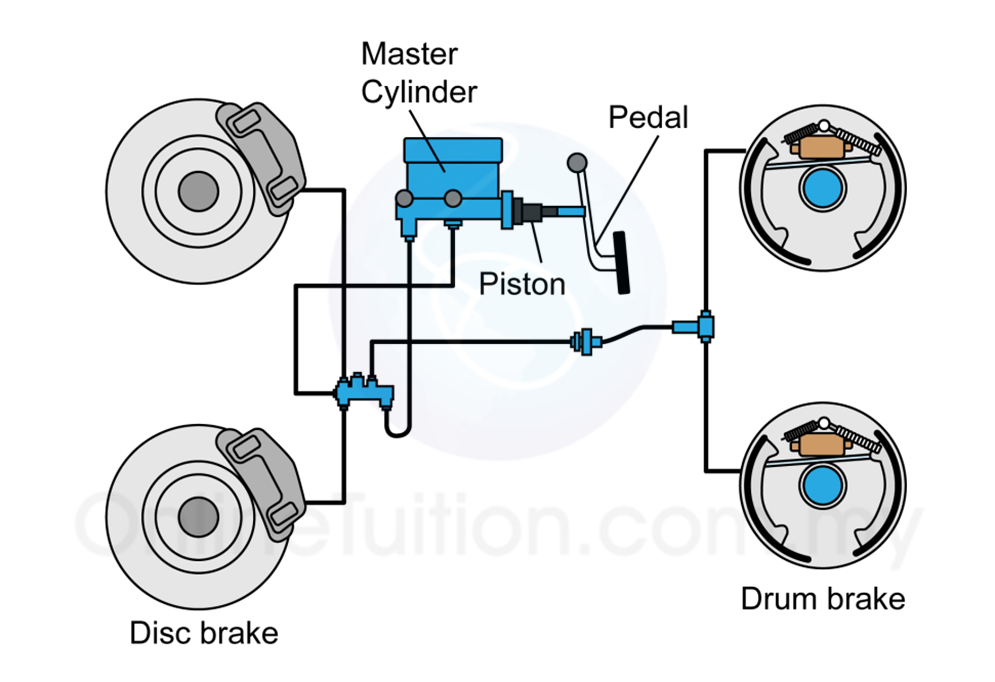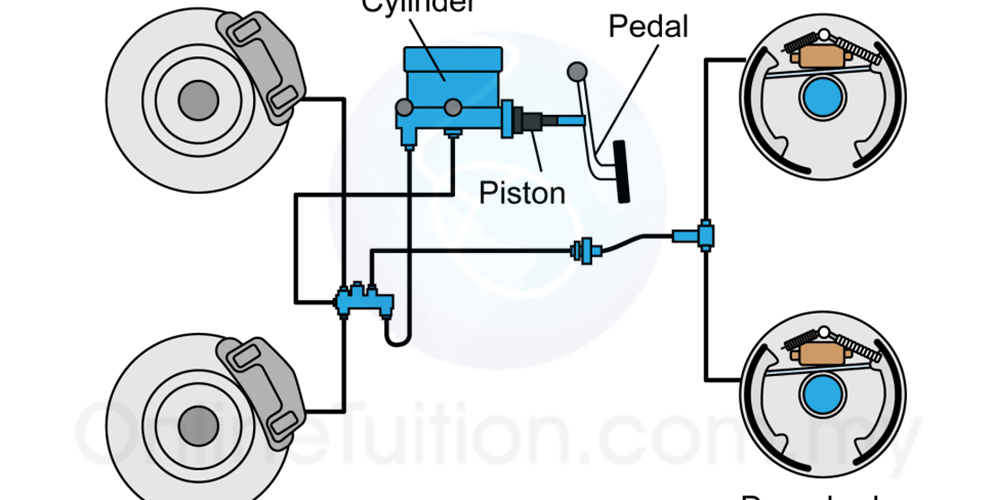Brake hydraulics technology is the central force behind a brake system. Without hydraulics, no modern braking system could operate as advertised. All components within a brake system are involved including brake calipers, brake pads, brake lines, and brake rotors. (A little more background on hydraulics here.)
What Are Brake Hydraulics?
Specialized brake fluid is pulled from a pressure-driven master brake cylinder through brake lines to subordinate slave cylinders located at each brake housing. Next, fluid is additionally pushed from the slave cylinder to individual brake calipers. These components house and activate internal pistons that ultimately drive brake pads against each brake rotor.
The combined introduction of hydraulic pressure and mechanical activation produces friction that slows all four brake rotors simultaneously, based on a driver’s desired pedal intensity.
How Do Hydraulics Help Your Vehicle?
Hydraulics make your braking system dependable. It makes it easy to gauge how much pressure you need to put on the brake pedal. It’s also cost-effective.
What Types Of Hydraulic Systems Apply To Auto Brakes?
It is rare that consumer auto-braking systems don’t use hydraulics to control the speed of a car. While there are other braking systems such as vacuum, electromagnetic, or air brake systems, in the case of auto performance brake systems, hydraulics is the preferred technology.
What Maintenance Is Required By A Car’s Hydraulic System?
While most consumer cars don’t typically call for regular maintenance schedules for hydraulic systems, there are some things that can be useful. First, when investigating brake pads, brake calipers, and brake rotors, look at the stability of the hydraulic system at large.
This means feeling differences in pedal pressures (For example, does it go all the way to the floor? More on that here.); noticing leaks associated with fittings and brake lines adjacent to brake housings; seeing obvious drops in fluid levels when opening the master cylinder storage vessel.
Do I Need To Maintain The Hydraulics?
Unless you have a fully-equipped shop with requisite tools, it is best to have an experienced mechanic deal with the hydraulic system.
What Types Of Brake Hydraulics Apply To Performance Cars?
While hydraulics are typical in form and function between consumer and performance cars, there are some differences as well.
This usually involves more or bigger components, including larger master cylinders and supporting components, the addition of more slave cylinders, along with the introduction of exotic materials.
How Do Brake Hydraulics Work?
Take a look at this video to see for yourself.





